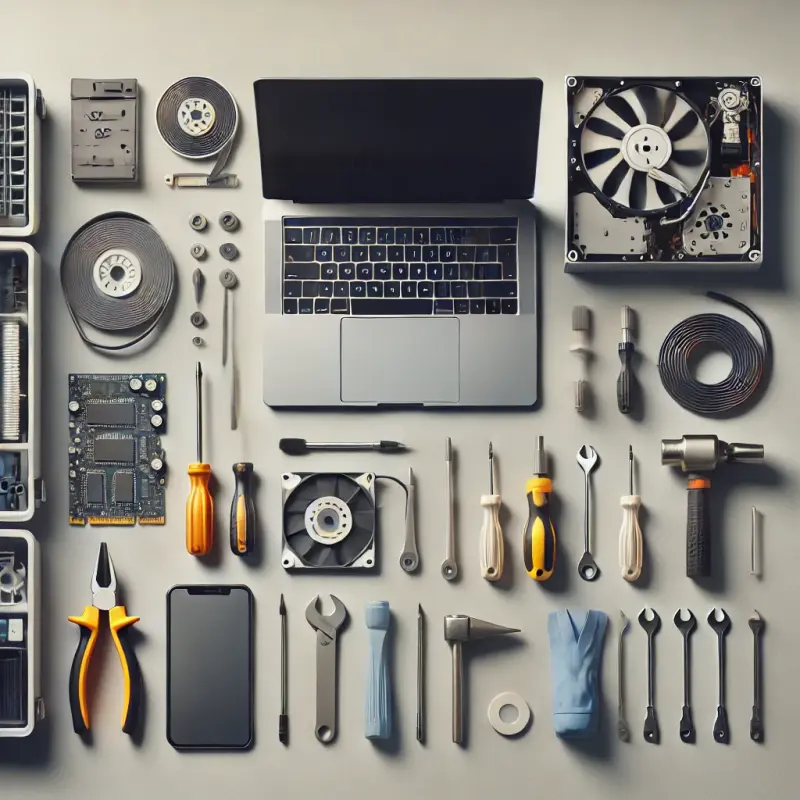Quick Fixes: Practical Hacks for Troubleshooting Common Tech Issues
Technical issues can disrupt our lives at the most inconvenient times, whether we’re facing device lag, network interruptions, or hardware malfunctions. Luckily, understanding some straightforward hacks for tackling these issues can make a world of difference. This article explores several actionable steps for diagnosing and fixing common technical problems efficiently.

1. Slow Device Performance
One of the most common tech issues is sluggish device performance. Whether on your laptop, phone, or tablet, performance often deteriorates due to various factors such as background applications, insufficient storage, or malware.
- Close Background Applications: Regularly check and close unnecessary background processes. These can consume RAM, causing the device to slow down.
- Free Up Storage Space: Clear out temporary files, uninstall unused applications, and consider storing files on external drives or cloud services.
- Run a Malware Scan: Malware can significantly degrade device performance. Regular scans with trusted antivirus software can help detect and remove any threats.
2. Internet Connection Issues
Nothing is more frustrating than a weak or inconsistent internet connection. Network issues may stem from Wi-Fi interference, router positioning, or ISP problems.
- Router Placement: Place your router in an open, central location to maximize coverage. Avoid positioning it near thick walls or electronic devices that may interfere.
- Reboot the Router: Rebooting often resolves connectivity issues by refreshing the network. A simple power cycle—turning it off, waiting 30 seconds, and turning it on—can improve performance.
- Update Router Firmware: Outdated firmware can lead to compatibility and security issues. Check your router’s settings for any available updates to ensure it’s running optimally.
3. Battery Draining Quickly
Fast battery drain is a common issue, especially in smartphones and laptops, and often relates to background apps, screen brightness, or hardware age.
- Reduce Screen Brightness: Lowering brightness can extend battery life significantly, particularly on mobile devices.
- Limit Background Processes: Use your device’s battery settings to identify and limit energy-consuming applications.
- Enable Battery Saver Mode: Many devices offer a battery-saver mode that minimizes non-essential functions, helping the battery last longer in critical moments.
4. Printer Troubles
Printers are notorious for causing issues, from paper jams to connectivity failures. Knowing a few key troubleshooting steps can save time and frustration.
- Check Paper Alignment: Ensure the paper is aligned correctly in the tray, as misalignment is a frequent cause of paper jams.
- Reboot the Printer and Computer: Sometimes, simply restarting both devices can resolve minor glitches.
- Verify Network Connection: For wireless printers, ensure both the printer and computer are on the same network. Reset the Wi-Fi connection if necessary.
5. Unresponsive Programs or Applications
Programs freezing or not responding can interrupt productivity, often due to memory overload or software bugs.
- End the Program Through Task Manager: On Windows, open Task Manager (Ctrl+Shift+Esc) to force quit unresponsive applications. Mac users can use the "Force Quit" option from the Apple menu.
- Check for Software Updates: Developers often release patches to fix bugs, so keeping software updated can prevent some freezing issues.
- Clear Cache and Temporary Files: Temporary files and cached data can burden application performance. Regularly clearing these can help maintain smooth functionality.
6. Screen Display Issues
Screen issues like flickering, color distortions, or blank displays can stem from cable connections, driver issues, or hardware malfunctions.
- Check Cable Connections: Loose or damaged cables can cause display issues. Ensure they are securely connected or replace any frayed cables.
- Update Graphics Drivers: Outdated drivers can cause display malfunctions. Make it a routine to update graphics drivers through your device’s control panel or manufacturer website.
- Try External Display Testing: If the screen remains blank, connect your device to an external monitor to determine if the issue lies with the screen or the internal hardware.
7. Audio Malfunctions
Audio issues, whether from speakers or microphones, often relate to device settings, driver updates, or external interference.
- Check Audio Output Settings: Verify that the correct output is selected in the audio settings, especially if you switch between multiple output devices.
- Update Audio Drivers: Outdated drivers can cause audio glitches, so ensure your drivers are up-to-date.
- Test with Different Devices: Testing with external speakers or headphones can help determine if the issue lies within the internal speakers or external hardware.
8. Bluetooth Connectivity Problems
Bluetooth issues are common with wireless devices, from headphones to keyboards. They usually arise from software or compatibility conflicts.
- Toggle Bluetooth On and Off: A simple toggle can reset the Bluetooth connection, often resolving pairing issues.
- Unpair and Reconnect Devices: Remove the problematic device from your Bluetooth list and reconnect it. This can help resolve lingering connection issues.
- Check for Interference: Bluetooth operates on a 2.4 GHz frequency, which can clash with other devices. Moving to a less crowded area or switching off other devices can improve connection stability.
9. Overheating Devices
Overheating can lead to sluggish performance and even hardware damage. Heat buildup often results from heavy workloads, poor ventilation, or dust accumulation.
- Ensure Proper Ventilation: Keep your device on a hard, flat surface to allow for adequate airflow. Avoid using laptops on soft surfaces like beds or couches that can block vents.
- Use Cooling Accessories: Laptop cooling pads or external fans can help manage device temperature during heavy usage.
- Clean Out Dust: Accumulated dust can obstruct airflow. Periodically clean the device’s vents using a soft brush or compressed air to reduce dust buildup.
Conclusion
Equipped with these practical hacks, troubleshooting common tech issues can become a manageable task. Many solutions require minimal tools and only basic technical understanding, empowering users to address issues effectively without needing professional assistance.
Articles
Subscribe to our email notifications to stay informed about the most recent and interesting articles.